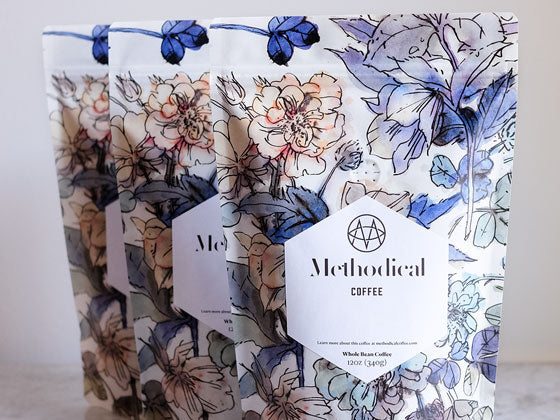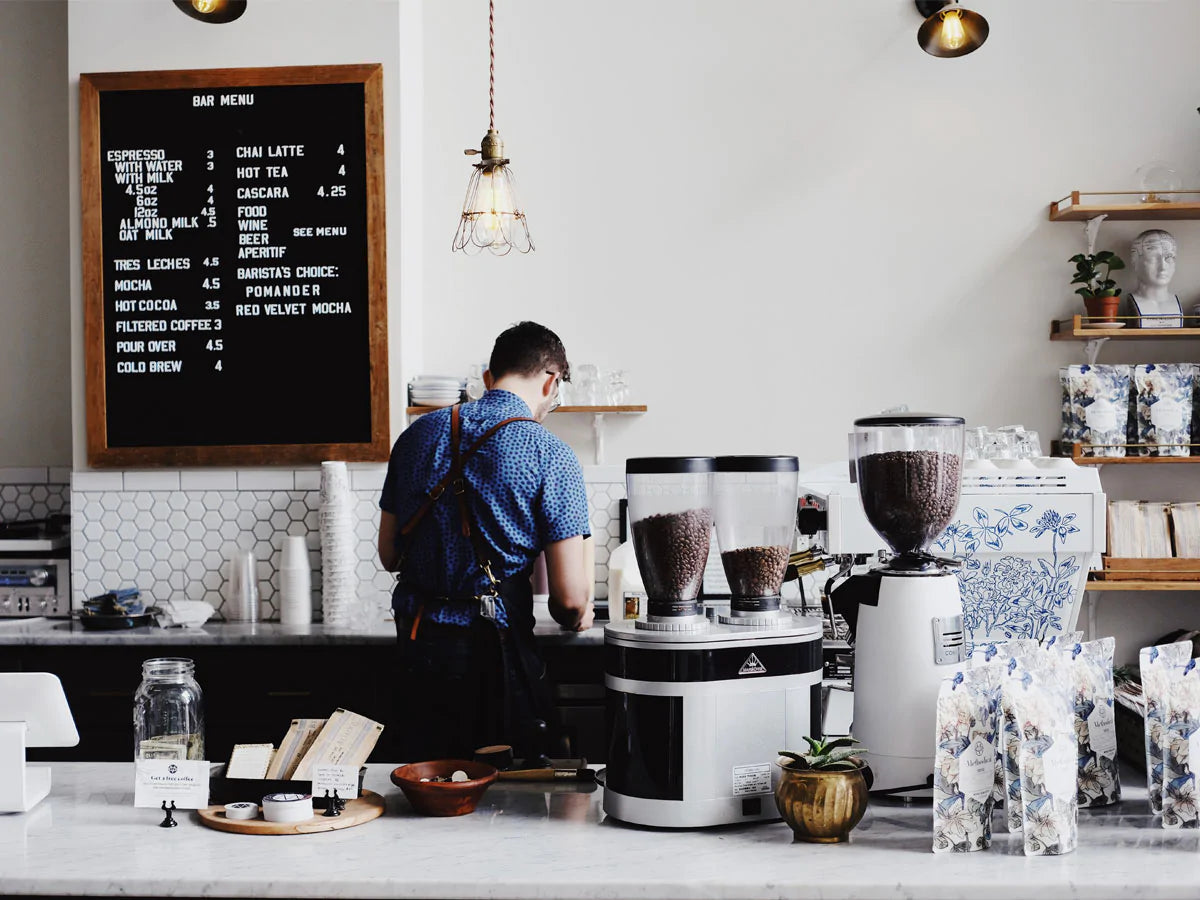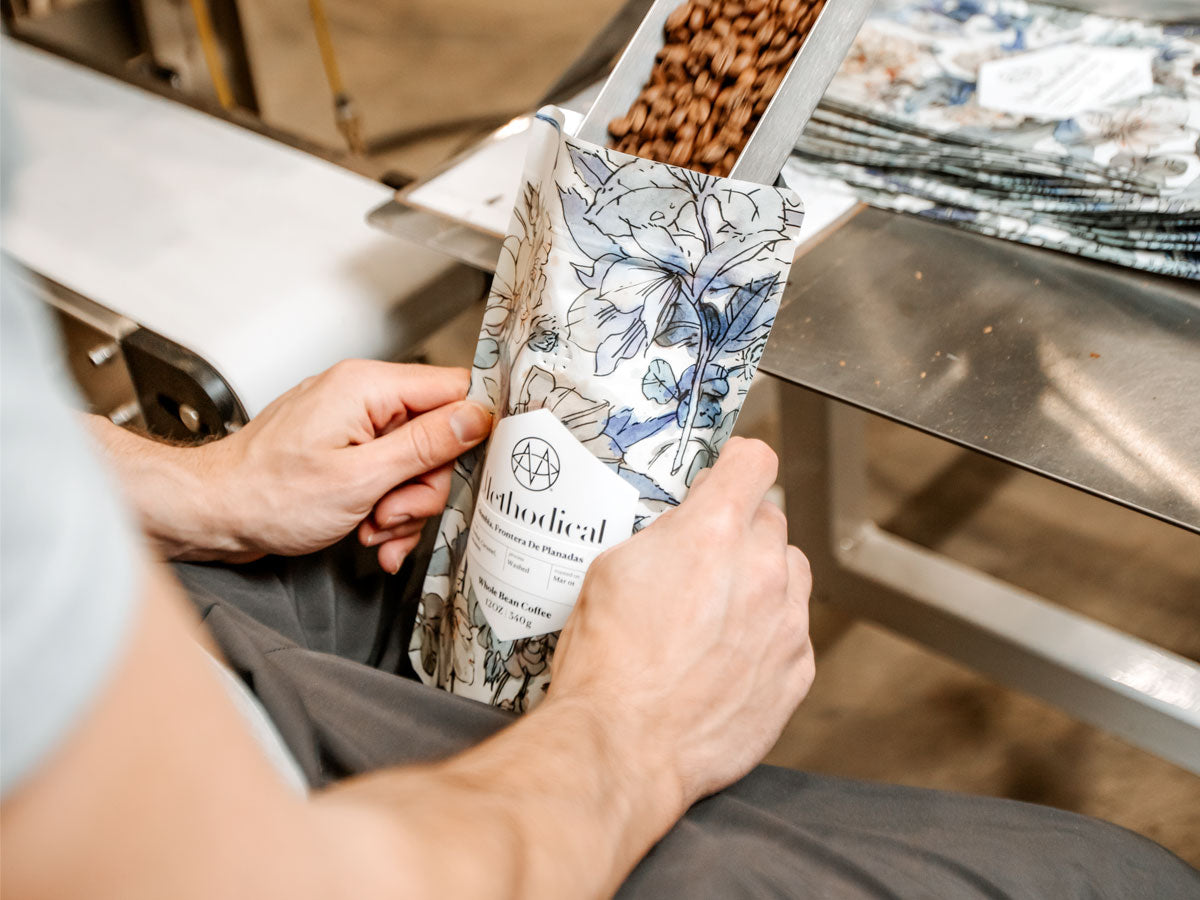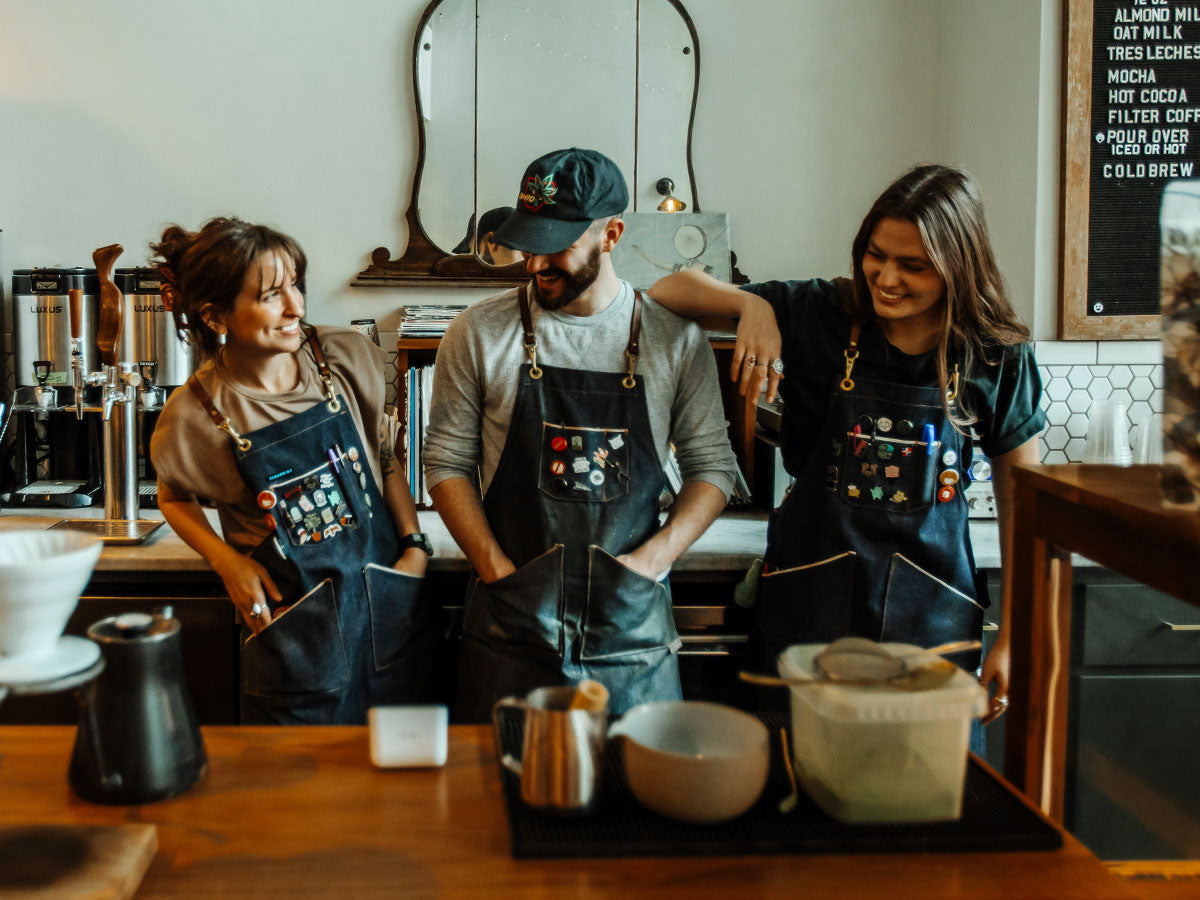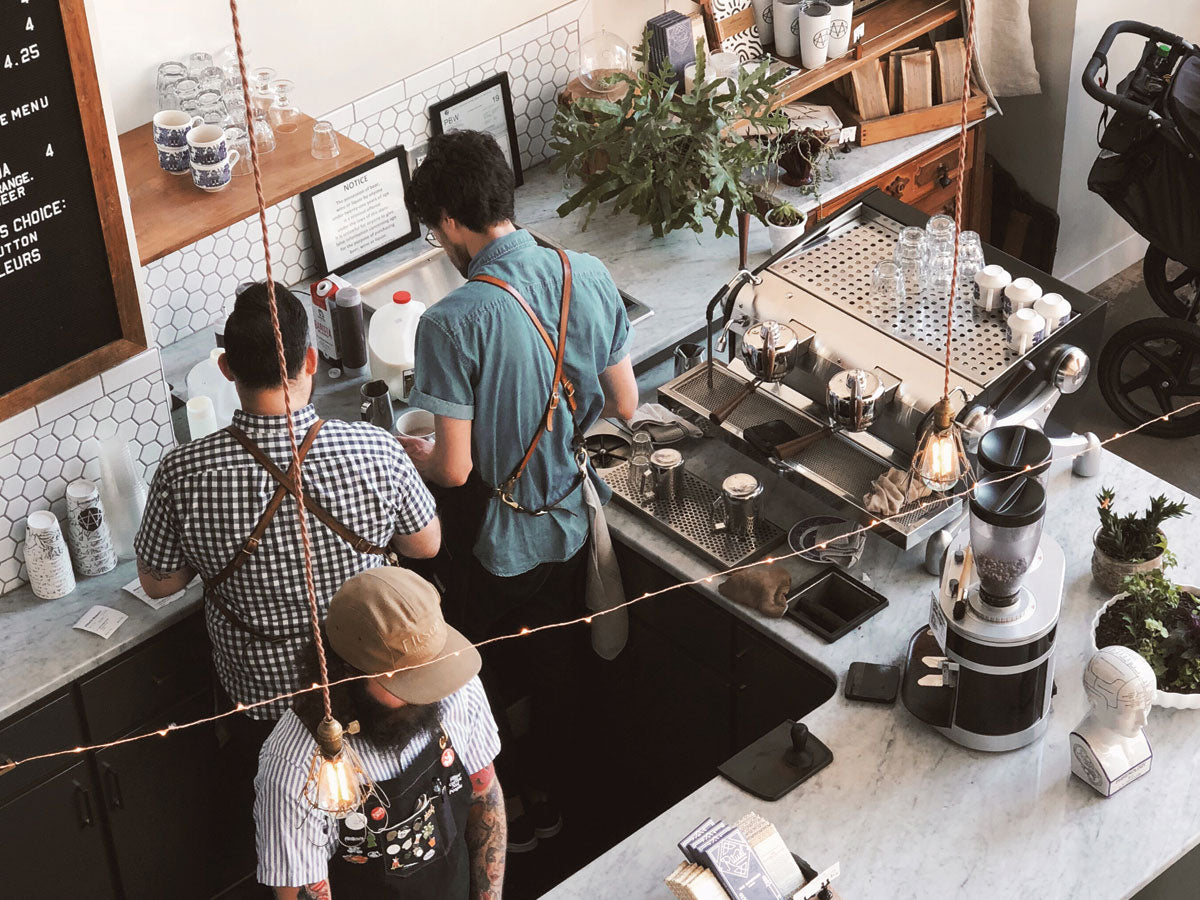Within every healthy community you will surely find an independently-owned coffee shop. In our modern society, coffee shops have become the place for members of a community to engage with their community. So it’s no wonder more and more people are interested in knowing if opening a coffee shop is right for them. So we are going to tell you what we learned from running Methodical for over 7 years. Here’s how you start a coffee shop.
What do we know about coffee shops?
Like many, we took a leap of faith when opening Methodical. None of us had prior experience running a business like this, but with a vision and a lot of passion we set out on the journey. Now over 7 years later, we operate 3 successful cafes, a commissary kitchen, and a roastery. We employ over 40 individuals some of which have been with us nearly from the start. To say we’ve learned a few things along the way is an understatement. We’ve learned a ton, some through successful hunches and some through utter failure. Thankfully we’re able to apply those lessons learned to further our business and continue our growth. We’re thankful for the people who coached us along the way by sharing their experience. And now we’re excited to share ours.
The coffee shop concept
On one side of the coffee offering spectrum you have restaurants. For them, coffee is a tertiary product that is served after a meal. In the middle you have cafes where coffee becomes a secondary offering served to nearly every customer alongside made-to-order dishes. And on the other side of the spectrum you have coffee shops.
The primary offering of a coffee shop is, well, coffee. Not only is it in the name, coffee beverages are the number one seller. Second to coffee is food, mostly premade pastries and light made-to-order dishes. And third, packaged goods like coffee bags and chocolate bars, as well as other retail, will be tertiary offerings. This is important to consider as the concept will have a tremendous impact on your start-up costs.
12 Steps to opening a coffee shop
1. Cast the vision
Develop a vision for your customer experience. What are you offering your community that doesn’t already exist? Who in your community are you targeting? What reputation do you want to obtain? Articulate this vision by creating a slide deck. Using images and text to tell the story. Dream big!
2. Build the business model
Now focus your vision into a model for a sustainable business. We recommend the Business Model Canvas, an easy to build table for developing your business model.
3. Set the menu
By this point, you probably have an idea of what you want to serve. Mock up a menu including all sizes and variants for all items. Once you’ve gotten everything written out, start chopping. Go item by item and ask if it is essential to your business’ success. If it’s not, cut it. A focused and concise menu will help you perform better than a bloated menu with too many options.
4. Find a location
You’ll be looking in areas that are either urban or suburban. Neither is better than the other and there are pros and cons to both. Keep in mind that your rent or mortgage should cost you no more than 10% of your net revenue. If a location costs $5,000/mo, you should be able to bring in at least $50,000/mo in revenue. If you don’t think you can, keep looking.
Urban locations have high foot traffic and visibility. They’re in densely populated areas that also have high price tags. The benefit is you’ll be taking advantage of the draw the city creates. You’re going to where the people already are. In these areas, plan to rely heavily on to-go orders. At least half your sales will be from takeaway orders. Therefore lots of seating isn’t necessary and you can look for smaller spaces to stay within budget.
If you’re looking in the suburbs or on the outskirts, you will likely become a destination drawing the people to you. Because of this, you’ll need to find a location large enough for plenty of seating. Customers will likely want to spend time in your shop, so don’t lose a potential customer because all the seats are taken. If you are in a car-heavy area, consider a drive-thru. Drive-thrus can be very successful if you’re able to keep up with the quick pace. Finding larger locations in the suburbs should still keep you within budget because of the cheaper price tag.
5. Design the shop
Now that you have a location in mind, hire an architect to help you lay it out. Architects know the building codes and laws to help you avoid costly changes later. You’ll not only be navigating building code, but also DHEC requirements for food prep and city laws for accessibility.
Start by laying your shop out into zones like storage, washing, prep, brewing, and seating. Customers love watching their coffee be made so be sure to make the dramatic things like espresso front and center while hiding the ugly things like the dish pit.
6. Hire a contractor
Getting the right contractor to handle the build-out is critical. Once you have your architecture drawings done, send them to several contractors and get multiple bids for the project. You may have a number in mind, but by getting several bids, you’ll be able to zero in on the true cost. Hire someone with a good rate and a good track record. You don’t want to have to repair poor work later on. Also, build-outs almost always take longer than projected. So be sure to pad your schedule and don’t let it stress you if construction takes a few weeks longer than anticipated.
7. Finance
Financing can be the most discouraging step in the process. Once you have an idea for the build-out costs, but before you sign any contracts, you need to secure your financing. You’ll either be looking for loans or investment. With investment, you’ll be giving away ownership for capital. This is a great way to finance your shop as long as you and your investors are in alignment. Personal loans can be the easiest way to finance as long as the terms are spelled out clearly like interest rates and payback dates. Loans from banks or the SBA (Small Business Association) are other options, but don’t be discouraged if they tell you no. Banks are typically pretty conservative when lending money to coffee shops. Try your best to avoid credit card debt. Credit cards are the most expensive way to finance your shop.
8. Set up services
Most of the items in this list will be happening simultaneously. While you are building out, hiring, and marketing, you’ll also need to be setting up all your services. Services like utilities, internet, security, your POS system, music, and service providers like CINTAS who provide towels, soaps, and floor mats.
9. Make it legal
In this business, asking for forgiveness is not easier than permission. Make sure you’re meeting all the legal requirements for operating a business. By this point, you should’ve already set up your LLC with your lawyer or CPA. If you have business partners you should’ve also already set up your Operators Agreement as well. Now you’ll need to apply for an EIN (employee identification number) with the IRS, a state business license, and when you’re ready to open, you’ll need a certificate of occupancy. And definitely don’t forget about insurance coverage!
10. Hire & train
Provide plenty of time prior to opening for your team to build camaraderie and confidence. Train on customer service, prep, and bar flow. Use our reference below on figuring out who and how many to hire.
11. Market, market, market
Build hype! You want your community eagerly awaiting your opening. Start marketing your business at step 1 in this list. Make a splash by announcing your new business on social and with the local news. Get your family and friends involved. Don’t lose momentum after the announcement, but keep it building by releasing information like the menu, renderings of the layout, pictures of construction, etc. Do small coffee pop-ups throughout the community during build-out to give people a taste. This will help ensure you have a line out the door on opening day.
12. Open
Yay! You finally made it. Before announcing to the public that you’re open for business, work out the kinks by soft opening. At your first soft opening, invite family and friends, and if you can, don’t charge them. This is a gesture to thank them for supporting you, but also give your staff a warm-up. Plan to open for just a few hours, close, and spend a few hours with your staff working through what they learned and adjust what needs adjusting. Then do another soft open where you’re open to the public, but just let the word spread naturally. This will help prevent a rush that can overwhelm your new staff. Once you feel good, announce it to the world! Have balloons, a ribbon-cutting, get the mayor out, a DJ, and do everything you can to make it a celebration because you deserve it!
How much does it cost
The largest hurdle when opening a coffee shop is financing. And to figure out your financing, you need to have an accurate understanding of how much it will cost. And that depends entirely on your business model. The demographic you’re targeting, where they’re located, and the menu and experience that will appeal to them are the primary considerations when estimating your start-up costs. Keep in mind that you should have a goal of paying off your start-up costs within the first 5 years and ideally within the first 3. Your goal is to get to profitability as fast as possible. When estimating how much capital you’ll need to get off the ground, here are the things to consider.
Build-out ($100k-$300k)
Build-out is going to be your largest startup cost. Depending on the size of the space, your concept, and how much demolition and installation you’ll be doing, your cost will vary significantly. Finding a location that was previously a food & beverage establishment is a great way to reduce your build-out cost. Spend lots of time evaluating your layout and workflow to identify efficiencies like power and water placement. Expect build-out costs to fall somewhere between $100,000 and $300,000.
Equipment ($30k-$60k)
Equipment is the second largest cost when starting up. And it’s your menu that will dictate it. The equipment for a coffee shop falls into 3 categories: specialty equipment, commercial kitchen equipment, and ancillary equipment. Expect equipment costs to be between $30,000 and $60,000.
Specialty equipment
- Espresso machine
- Pitcher rinser
- Knock box
- Grinders
- Batch brewer and airpots
- Hot water tower
- Water filtration system
Commercial kitchen equipment
- Ice maker
- Refrigerators
- Freezer
- 3 compartment sink
- Dishwasher
- Work tables
Ancillary equipment
- Pour over brewers
- Kettles
- Tea pots
- Tamp
- Tamp mat
- Milk pitchers
- Scales
- Stirring spoons
- Whisks
- Strainers
- Squeeze bottles
- Kitchen timers
Furnishings ($5k - $8k)
Furnishings are an extension of your brand. The experience you create for your customers through your furnishings should match the experience you provide within your cup. Be as intentional with your decor, tables, chairs, and cups and plates, as you are with your coffee. Sourcing can be difficult, but don’t hesitate to ask companies if they offer trade discounts.
Training ($5k - $8k)
Once you have assembled and hired your team, you will need to spend time together to train. Training should include casting your vision for the shop and the customer experience, training on beverage and food preparations, bar flow, and how to work together as a team. Give your team adequate time to train so they’re not stressed or lacking confidence when you open. You have one shot at a first impression, so set your team up for success. Budget a week’s worth of pay for training all team members prior to opening.
Professional services ($10k - $20k)
It takes a village to open a business. Plan to incur costs for hiring professional services like a CPA, lawyer, architect, graphic designer, interior designer, or business consultants.
Goods ($10k)
You will need to place orders for all your goods like coffee, milks, tea, flavorings, food, paper goods, and retail before you open. Plan for around $10,000 for purchasing these items, and don’t plan to make much money off your initial order. You’ll be using a good bit of it during training and soft opens.
Operating capital ($10k-$20k)
It will take time for you to become cash flow positive where you have more cash coming in than going out. To help relieve stress and give you a cushion for just-in-case, plan to have $10,000 to $20,000 in the bank for operating capital.
Who do you need to hire/how many people
To figure out who you’ll need to hire, start by identifying your roles. General manager, shift manager, barista, chef, cook, baker, are all common positions at a coffee shop but you may not need all of them at the start. Though having an individual split between multiple roles sounds like an efficient idea, typically it doesn’t go well. Let your team dedicate their minds to a single position.
When hiring, start with your leadership team. Shift managers, lead baristas, and chefs will lead the team to success. Find people you believe in, who have experience, and that align with your vision. Even if you start out managing the employees yourself, you will eventually want to delegate those tasks, so having people to promote will be a smoother transition than hiring from outside.
To estimate how many people you need to hire, start by creating a mock schedule. Based on the hours you’ll be operating, figure out the stations that will need personnel throughout the day. Coffee shops tend to be busiest in the late morning and early afternoon. And weekends are typically busier than weekdays so plan to be fully staffed at those times. Also be sure to account for time to open and close the shop.
What supplies do you need
Goods sold
Goods sold are the things that go into a purchase. It includes your coffee, milks, tea, flavorings, food, and retail. You’ll need to be in a weekly rhythm of taking inventory and ordering. Make use of a PAR level system which will prevent you from running out of inventory.
Consumables
Consumables include your paper goods like cups, lids, straws, napkins, filters, etc. As well as receipt paper, printer paper, and anything else that will need to be continually replaced.
Cleaning supplies
Soaps, detergents, disinfectant sprays can be provided to you through services like CINTAS. Other cleaning agents like Cafiza will also need to be on hand for cleaning your coffee equipment.
Have more questions?
Though it is stressful and difficult, nothing is more satisfying than seeing your community excited to see you open and eager to support you. It’s a special feeling that we feel very lucky to have. If you have more questions that we didn’t answer here, feel free to reach out and ask!
If you’re in the process of opening a coffee shop, or even if you already have, we’d love to partner with you. Our wholesale program provides coffee as well as tea and we’ll help you navigate your barista training, which equipment to purchase, and answer any questions you may have about how to run a healthy business.
Apply to be a wholesale partner
You might also like:

